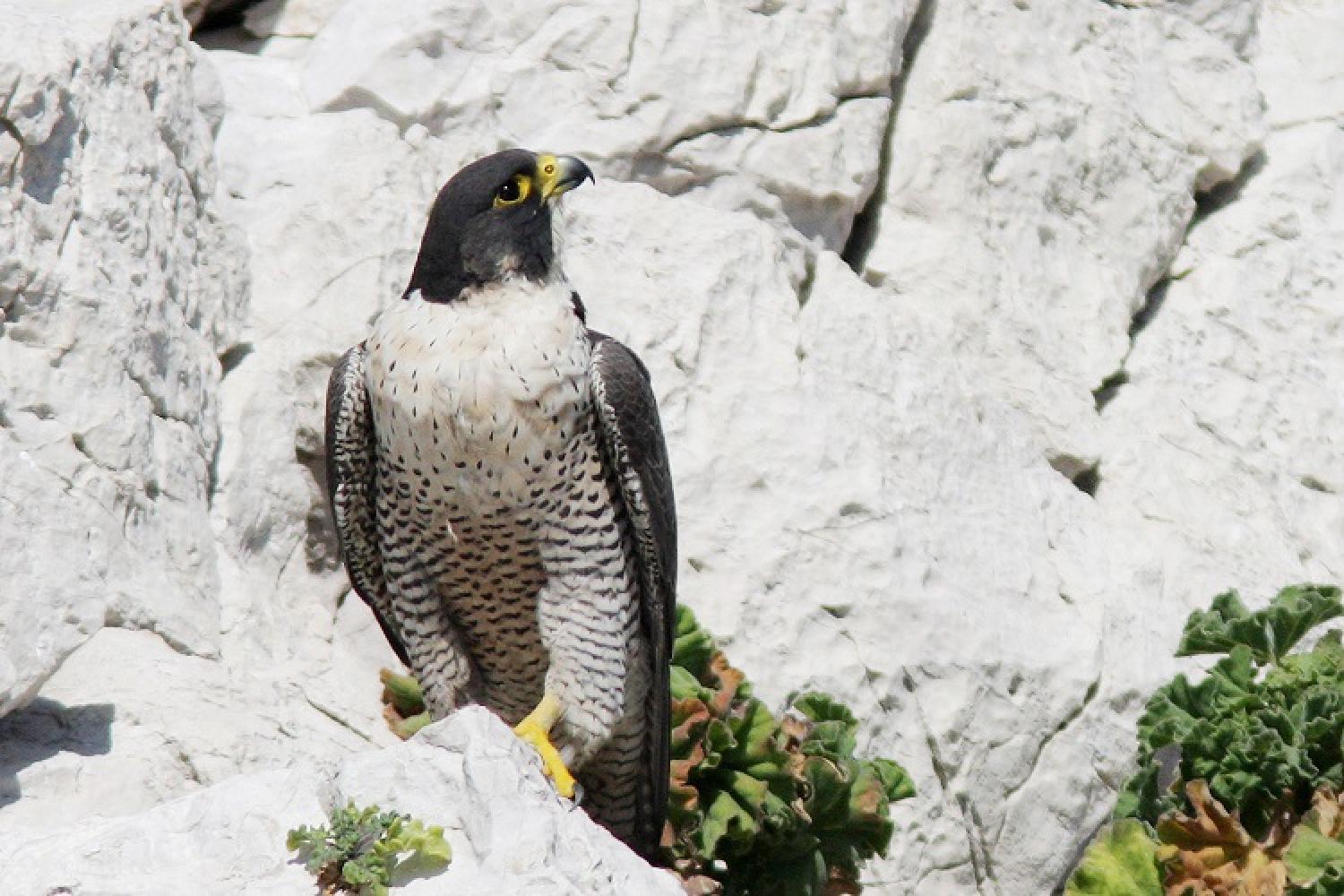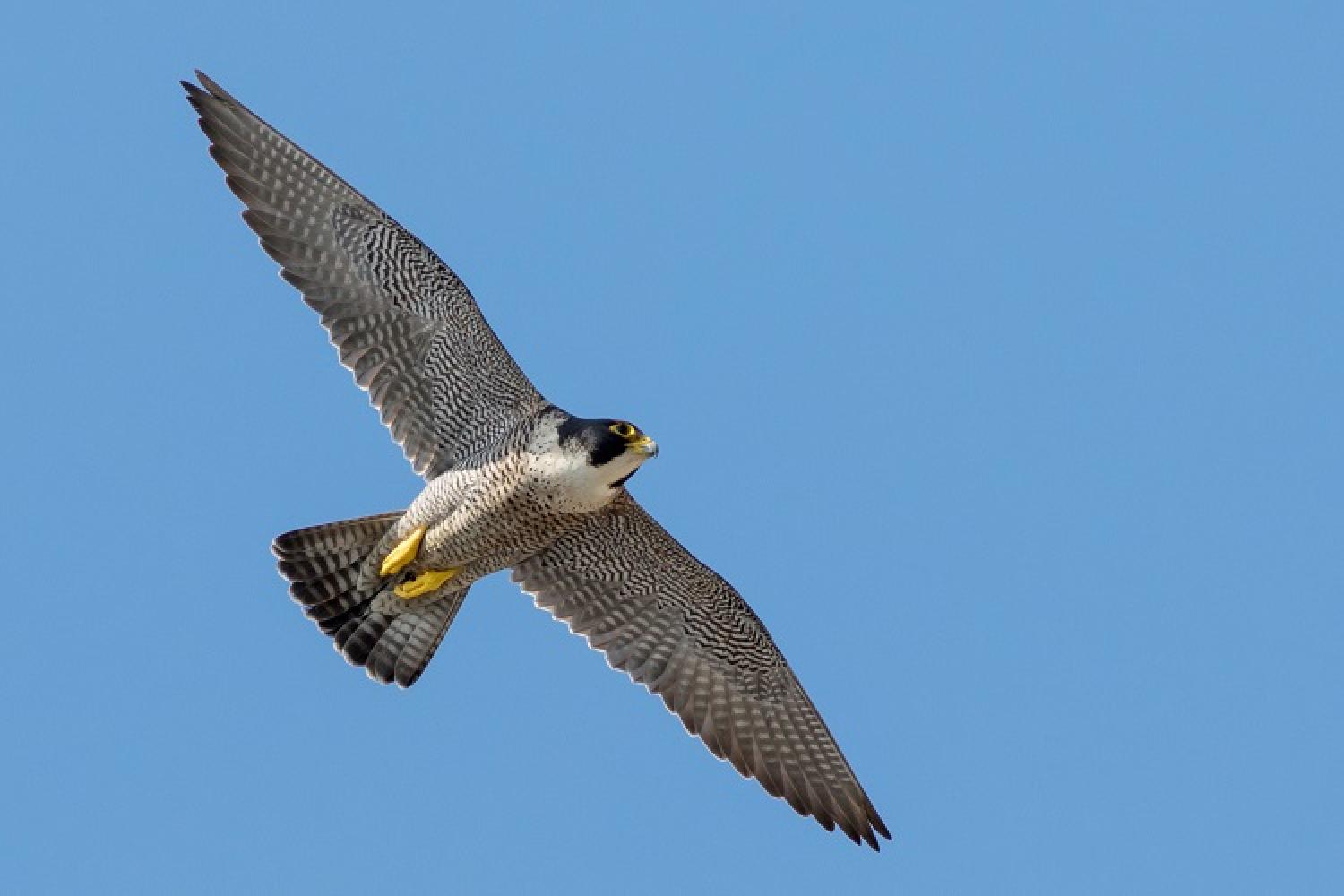A high flying hunter, the falcon is reputed to be the fastest bird in the world. It can reach up to 400km/hour when it dives to catch its prey!
A symbol of power and of the ancient Egyptian God Horus, or a high flying hunter in falconry for nearly 35 centuries, the peregrine falcon has always been, and still is, a prestigious bird of prey admired for is aerial prowess and its hunting skills.
It nests in cliffs along the coastline dominating the sea where it hunts other migrating birds coming in from the sea. The female lays 2 or 3 eggs and baby falcons,or eays, that hatch after a month and half of incubation, are raised for two months. The peregrine falcon is a pure avivore, i.e. it only eats birds. In the Bouches-du-Rhône, this predator protected at a European level, is partially sedentary and its numbers are confined to the rocky coast. Five couples of peregine falcon breed in the islands of Marseilles where they find rocky cavities safe from disturbance.
Scientific name : Falco peregrinus
Breeding season : February to June
 Did you know ?
Did you know ?
Its reproduction on the islands of Marseilles has been proven since the 16th century where they were captured by young hawk keepers, in particular by the islands’ guards on behalf of the king, Louse XIII.
 Conservation stake
Conservation stake
![]()
 Threats
Threats
- Human disturbance (climbing)
- Changes to its environment
 Conservation management initiatives
Conservation management initiatives
- Channelling visitors
- Temporary closure of climbing areas
 How can I help to protect it ?
How can I help to protect it ?
- When climbing, I respect any closed climbing area






